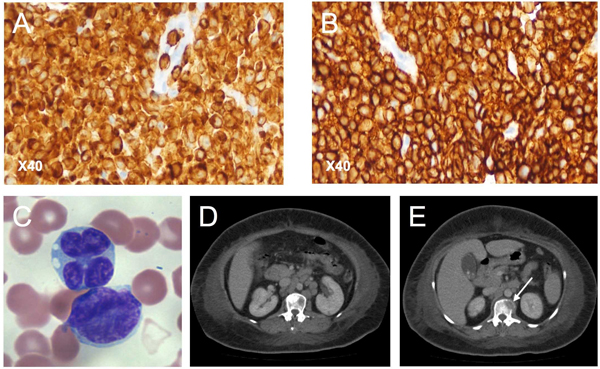Volume 19, Number 10—October 2013
Dispatch
Variant Human T-cell Lymphotropic Virus Type 1c and Adult T-cell Leukemia, Australia
Figure 1

Figure 1. . CD3 (A) and CD4 (B) cells immunostained with diaminobenzidine and horseradish peroxidase in lymph node biopsy sample from patient 2 (Aus-GM). Original magnification ×40. C) Peripheral blood cells smear from adult T-lymphocytic leukemia patient 1 (Aus-NR). Tumor cells exhibiting multilobulated nuclei (or flower cells), which are mature activated CD4+ T-lymphocytes. D) Contrast-enhanced computed tomographic image of abdomen of patient 1, revealing para-aortic lymphadenopathy. E) Contrast-enhanced computed tomographic image of patient 1, showing lytic bone lesion (L-1 veretebral body) with soft tissue involvement (arrow).
1These authors equally contributed to this article.
Page created: September 16, 2013
Page updated: September 16, 2013
Page reviewed: September 16, 2013
The conclusions, findings, and opinions expressed by authors contributing to this journal do not necessarily reflect the official position of the U.S. Department of Health and Human Services, the Public Health Service, the Centers for Disease Control and Prevention, or the authors' affiliated institutions. Use of trade names is for identification only and does not imply endorsement by any of the groups named above.